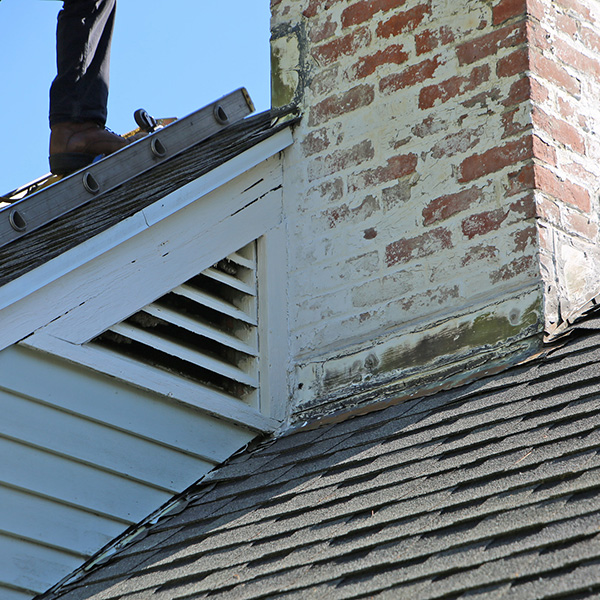What Chimney Stains Mean and What to Do About Them
If you have stains on the exterior of your chimney, it may be something to have checked out right away. A variety of stains can show up on chimneys, some of them relatively benign, others pointing to potentially dangerous operating conditions. Burlington Fireplace & Solar of Burlington, WI, encounters chimney stains on a regular basis. We know what the stains mean, and we know what to do about them. Here’s some helpful information about stains on your chimney.
 White chimney stains
White chimney stains
This is a common type of stain, called “efflorescence.” The white you see on your masonry could be the result of evaporating snow and rainwater. It also could be due to water penetrating the bricks and leaching salts out of them. If water is moving into the bricks, more serious damage is almost certain to happen over time. Compromised bricks should be replaced, as should crumbling mortar joints. After repairs, a waterproofing sealant can be applied to the entire visible chimney to stop water intrusion.
Black or dark-brown chimney stains
This type of stain is usually made by creosote and soot that have escaped the chimney flue. The staining may be just around the top of the chimney or running down the masonry.
Black and brown chimney stains are often caused by a chimney fire or a series of chimney fires. The problem with many chimney fires is that they’re small and brief and go out fast before anyone knows they’re happening. But all types of fires can damage the chimney.
Addressing creosote stains starts with an inspection to determine if a chimney fire has happened. Chimney technicians can remove flammable creosote from the flue to reduce the chance of another fire. Technicians can also repair the chimney liner, chimney masonry and other parts of the system if they’ve been damaged.
Green, blue or black chimney stains
These colors point to mold or algae, both of which grow freely in damp, poorly ventilated areas. Of particular concern is mold, which can be harmful to people’s health. An inspection will determine if the growth is happening within cracks or gaps in the masonry. If this is the case, your chimney technician will repair the damaged areas. Regardless of where the growth is coming from, it should be removed with an approved mold cleanser. Finally, the chimney can be waterproofed.
Rust stains
Rust stains on the sides of chimneys and possibly the roof mean that a metal component at the top of your chimney is beginning to rust out. Typically, we’re talking chimney caps, flue covers and chimney chase tops made of rust-prone metals.

The strategy for rusted components is to have them replaced with new components made from stainless steel or other materials that are highly rust-resistant.
Keep your chimney clean, safe and efficient
Along with addressing chimney stains, the experienced technicians at Burlington Fireplace & Solar also provide CSIA-certified chimney sweeping, licensed chimney inspections and a full menu of chimney repair and rebuilding services. If it’s time to have your chimney looked at, call the experts at (262) 763-3522. You can also get in touch through our simple contact form.
